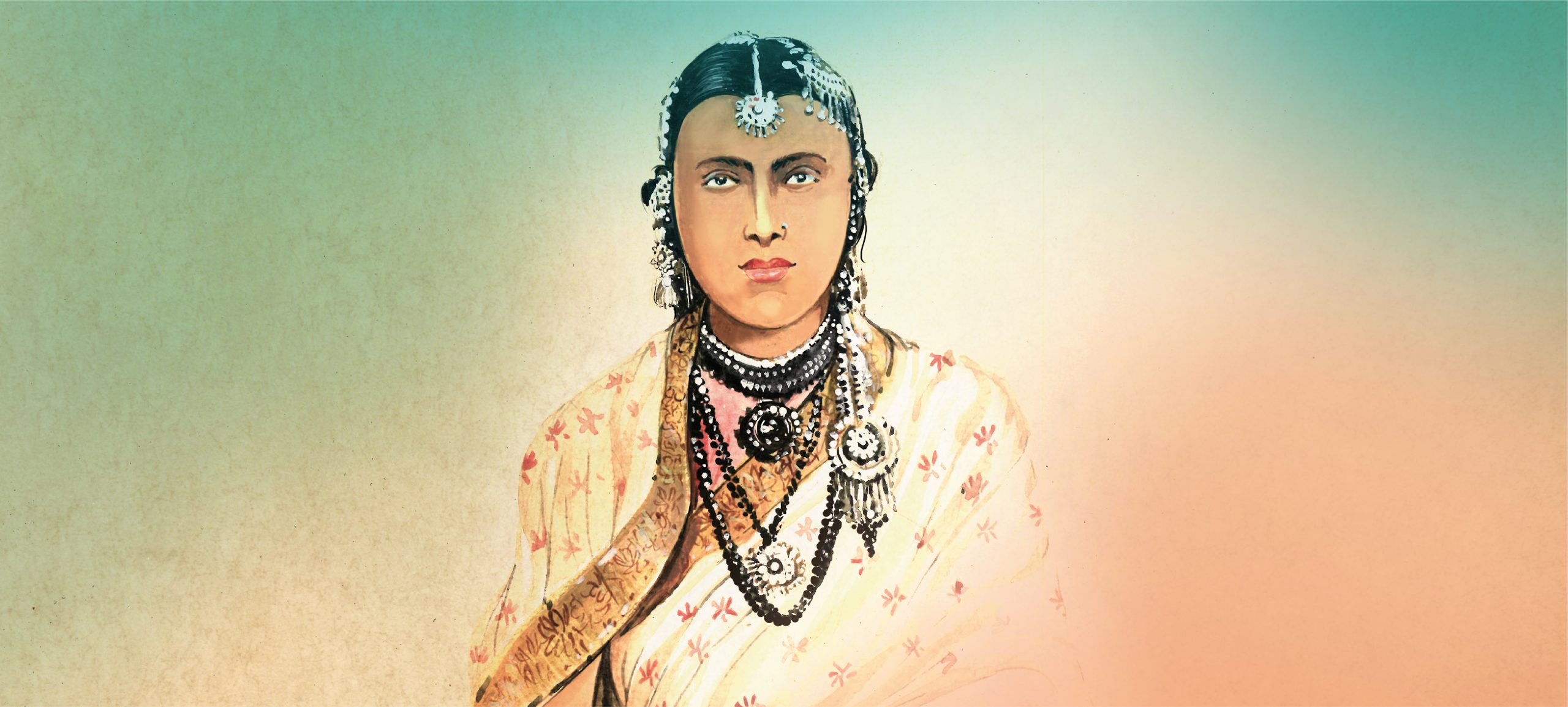
Based on the real-life story of Hindustani singer Janki Bai Ilahabadi (1880-1934), Requiem in Raga Janki by Neelum Saran Gaur is the beautifully rendered tale of one of India’s unknown gems.
Janki Bai Ilahabadi enthralled listeners wherever she performed, and counted as her fans maharajas and maharanis, poets and judges, nawabs and government officials-everyone. She was Janki ‘Chhappan Chhuri’, Janki of the fifty-six knives-attacked in her youth, she surviveed miraculously. Brought up in a nautch house, she rose to become the queen of Allahabad, her voice taking her from penury to palaces and royal durbars.
Here is an excerpt for her incredible story.
Her name lingers in certain locations still—Bai ka Bagh, Liddle Road, Rasoolabad. There is a godown on the Jawaharlal Nehru Road that is used to store Magh Mela tents and other equipment. There is a large field at the Police Lines. And a crumbling monument in the Kaladanda cemetery called Chhappan Chhuri ki Mazaar. I will tell you what I know of her and also what I guess and imagine.
Chhappan Chhuri was Janki’s nickname—she of the fifty-six knife gashes. I don’t think that that figure, fifty-six, is to be taken literally. She herself wrote somewhere that the number of stabs far exceeded the proverbial fifty-six which was a mere metaphor, an attractive alliteration endorsed by confusion and inaccurate reportage. With time it assumed other cloaks of innuendo so that ‘Chhappan Chhuri’ suggests someone armed with many weapons of assault, a woman of lethal witchery, of potentially heart-piercing beauty—such the devilry of words. But really she was none of these. She was just a woman who’d survived a murderous attack and who carried on her body dozens of scars which would become her signature of identity, conjoined to her name, Janki Bai.
There are three different accounts of the stabbings and no one knows which the authentic one was, and Janki’s own account is versions. In one account a crazed fan, spurned, worked his rage on her. But that does seem unlikely. She was barely eight, according to this account, when it is supposed to have happened and her protective mother could not have turned away a besotted lover from her mehfil simply because she hadn’t started entertaining audiences that way. That’s just one of those romantic stories that attach themselves to people as image enhancers for posterity. It seems that Janki herself initiated this account in the introduction to her diwan of verses, little realizing the transparent inconsistency of it. I can understand her reasons, though. She was a marked woman, quite literally, her skin torn in crumpled gullies of stitched together flesh, lines which the decades had failed to erase. That was the very first thing people saw, the disfigurement. It followed her everywhere. I can’t say if she ever really accepted it. It’s possible that it had sunk into the grain but it did not surface in her voice as any obvious ache. Nothing so trite. Rather, there was the powerful swell and soar of overcoming. But for purposes of history some subterfuge was in order, especially in times of circumspect and censored telling. And especially in situations of family shame. What is stated as an authentic truth is not so much a deliberate lie but a carefully composed face-saving fiction to answer the disquieting personal questions that are bound to crop up. Like all the plasters of lentil paste, soaked and buried in earthen pots, the unguents of sandalwood and turmeric and flour, the masks of clayof-Multan and honey and lime, the story doesn’t quite camouflage or convince.
But desperate efforts to conceal what has clearly remained unhealed must be respected. There was a second version in circulation, that she was attacked by a rival singer whom she had outsung at a durbar soirée organized by the maharani of Benaras.
There is even a name to this shadowy assailant—Raghunandan Dubey. She was eight years old, a singing prodigy, and she defeated a much older and far more established singer, and consequently she was the victim of a jealous attack. She did not die but underwent treatment generously paid for by the maharani, who took an interest in her. And when she recovered, her mother, afraid to stay on in Benaras with all its vicious intrigues and rivalries, brought her to Allahabad and they made a life for themselves quite different from the earlier one.
Let me first recount the concocted history, the version invented by Janki as preferable to what did happen. Let us place it all as Janki would want us to, the music chamber, the crowd of connoisseurs, the shy loveliness of the little songstress, who’d trained under Koidal Maharaj of Benaras himself, rendering ‘Jamuna tat Shyam khelein Hori’, and the man who came as just another one in the crowd, accepted the paan, acknowledged the itr and the proffered wine and lolled back on the bolster and listened intently. He wasn’t old and he wasn’t young. They noticed him the very first time when he produced two banknotes from his achkan pocket and beckoned to Janki. She had only just finished a song. Obligingly she slipped up to him, smiled and sank to her knees in a graceful swirl of silk and tinsel and a cascade of tinkling anklet chimes. He circled the notes around her head and tossed them into the ornate silver dish that lay alongside his bolster. They were all taken aback at the amount though they did not show it. Janki raised her jewelled fingertips to her brow in a salaam, a shy flush playing on her young face.









